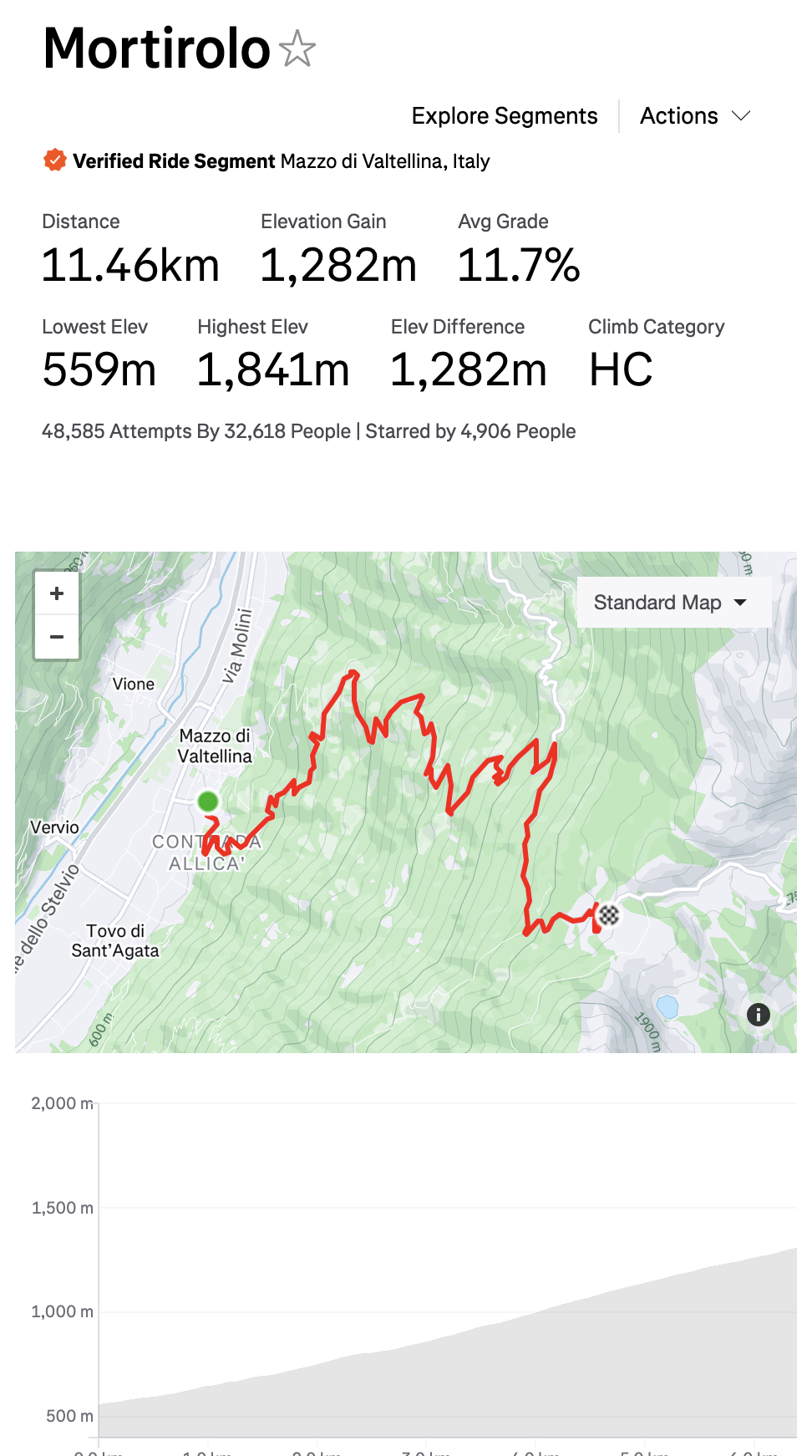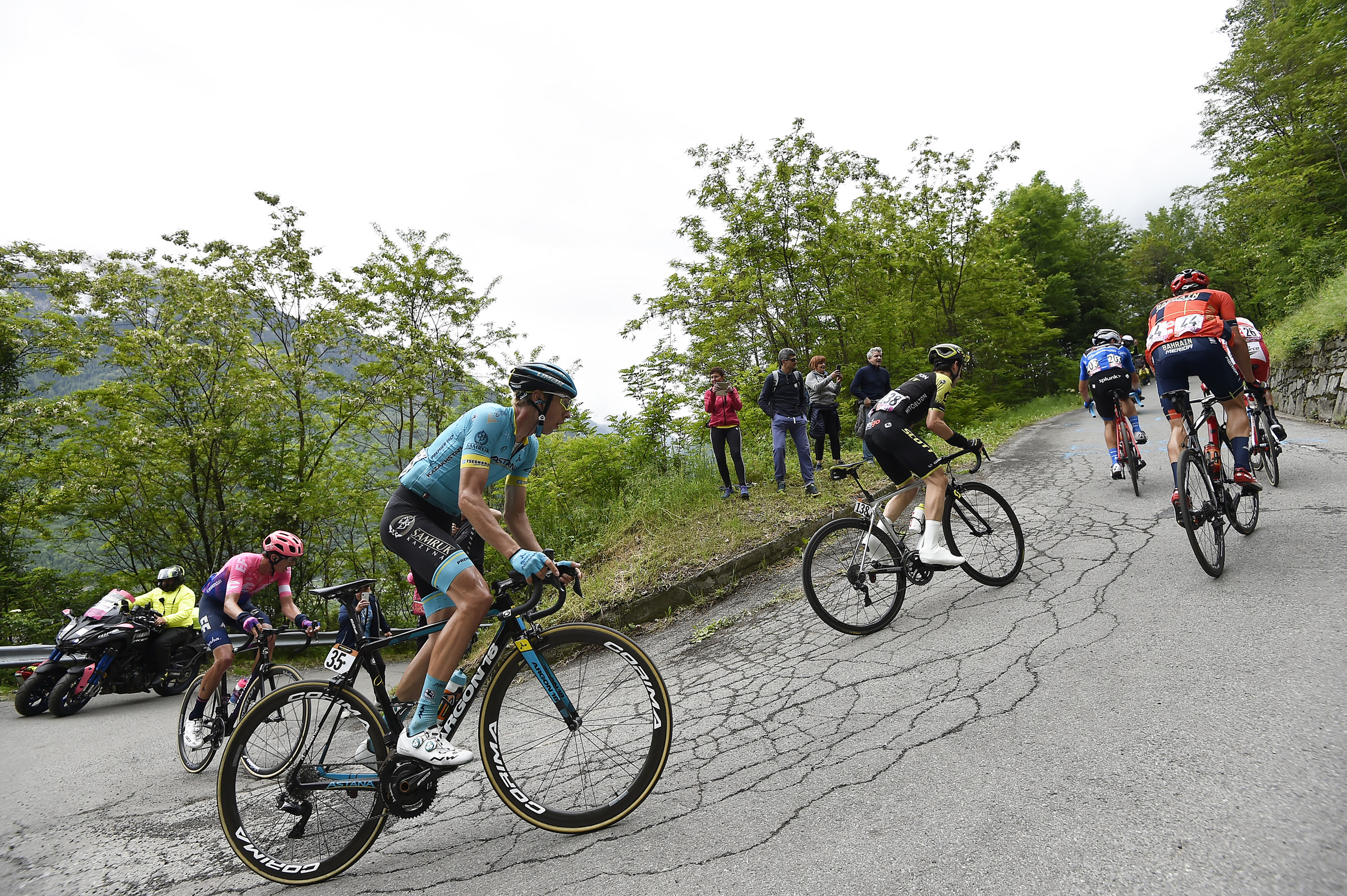
The Mortirolo is a climb steeped in the rich history of pro cycling, but of the dozens of stories of startling battles and broken breakaway attempts, two figures may do the most to strike fear into the heart of any eager cyclist: 11.46km and 11.7%.
At a shade under 11.7%, the Mortirolo is a truly steep climb, and its inclusion at the Giro d'Italia has always sparked excitement. Located in the Eastern Alps, near the towns of Aprica, Tirano and Edolo, the Mortirolo is an unassuming ascent of a forest-covered mountainside.
It doesn't boast the ornate hairpins of the nearby Stelvio pass, or the exposed mountain backdrop of the Gavia, but the understated climb delivers a brutal challenge to anyone daring to take on its slopes in anger.
The ascent can be made from four sides – a light ascent from Monno averaging 6.5%, a punchy 14.8km from Grosio at over 7%, and then the two infamous ascents: One from Tovo di Sant’Agata inflicting a brutal 10.8%, and the more classic ascent from Mazzo di Valtellina averages 11.7% over 11.46km.
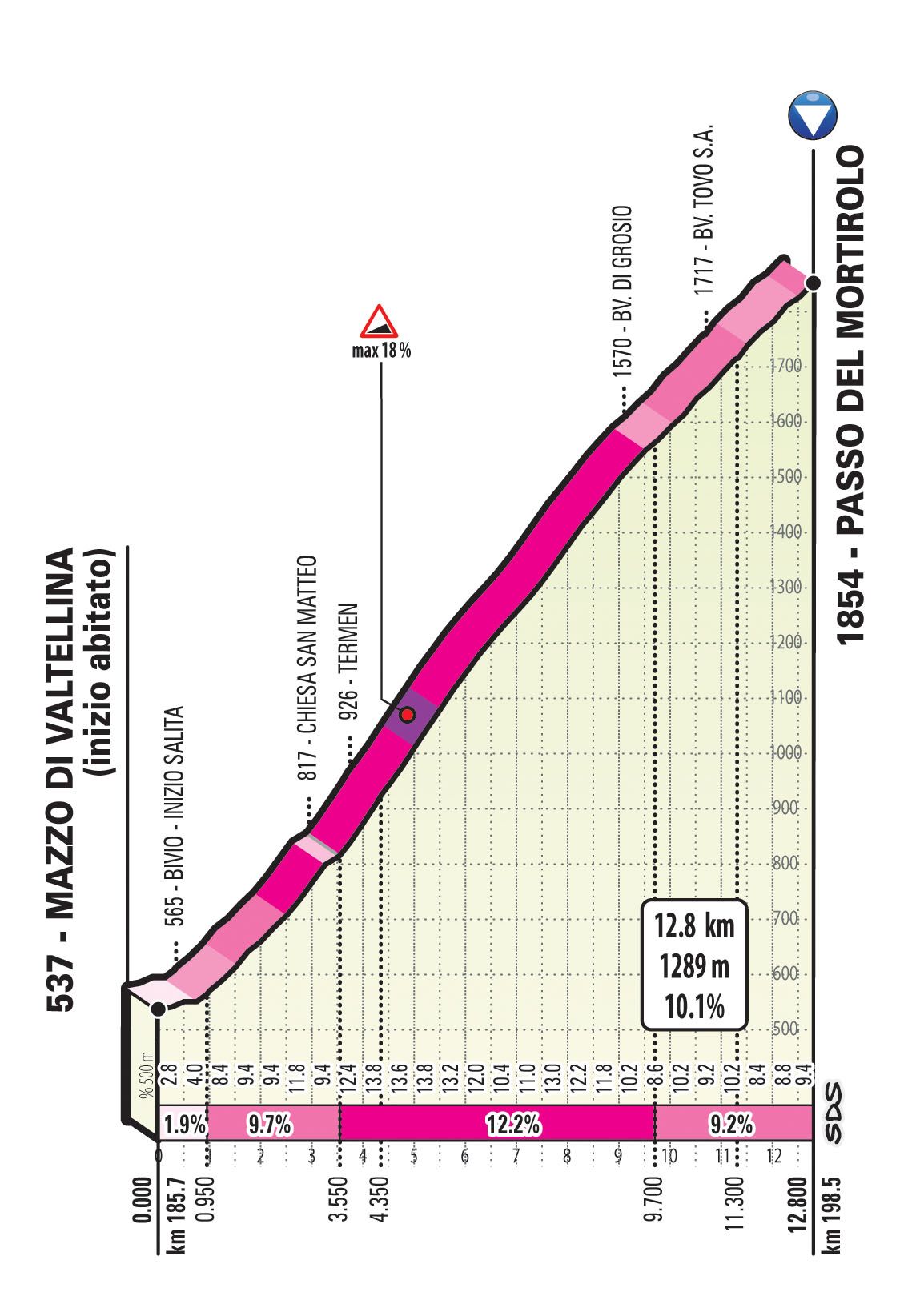
Compare the Stevlio from Bormio, and though it may be longer at 21.1km, its comparatively shallow 7.1% incline makes it a virtual breeze. Neighbour to both climbs, long 24.8km Gavia averages less than half the steepness at 5.6%. Indeed, perhaps the only climb to challenge the Mortirolo for severity is Monte Zoncolon with its startling 12.3% average incline – but at a shorter 9.8km it lacks the relentless length and consistent kilometre after kilometre above 10% which makes the Mortirolo unique.
Lance Armstrong referred to it as the hardest climb he'd ever ridden, and while we perhaps can't take the Texan's word for much, we can certainly believe that.
History of the Mortirolo
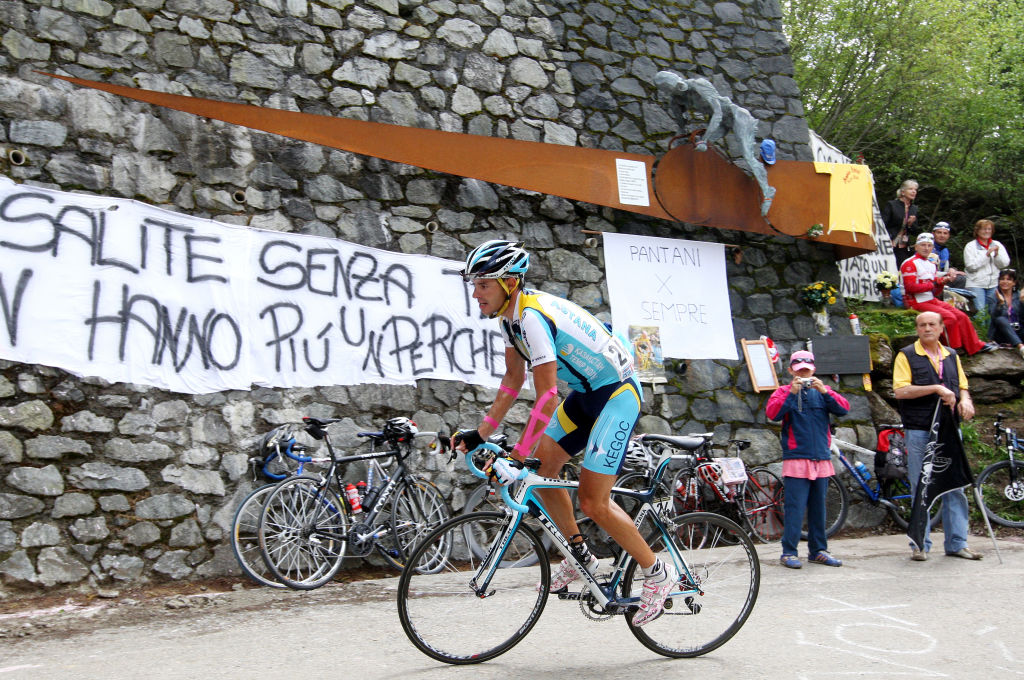
The Mortirolo has featured 16 times in the Giro d'Italia, and perhaps its most iconic inclusion was in 1994, when Italian climbing legend Marco Pantani made his first significant mark on the sport when he cracked Miguel Indurain and Evgeni Berzin to take the stage victory.
His triumph set the Italian press alight, with the Italian eventually finishing second in the overall standings ahead of two-time maglia rosa winner Indurain and surprise winner Berzin.
The legacy on Italian cycling, and the area is so great that a monument to Pantani was erected on the ascent in 2006. More recently, the summit was renamed to Cima Pantani in 2024, following a decision from the officials of nearby towns Mazzo and Monno.
Pantani's name may now be literally synonymous with the climb, but it has hosted other famous battles, and never failed to play a key tactical role in the race whenever it has graced the route profile.
While lacking the fireworks of Pantani's attack, Ivan Basso made his mark on the Mortirolo in 2006. He and fellow countryman Gilberto Simoni attacked up the Mortirolo incline to devastate the general classification field on stage 20 of the Giro d'Italia.
Simoni would be distanced by over a minute by the finish as Basso rode himself into overall race victory. His son Santiago had been born the previous day, and the Italian held a picture of him aloft when he crossed the finish line in Aprica.
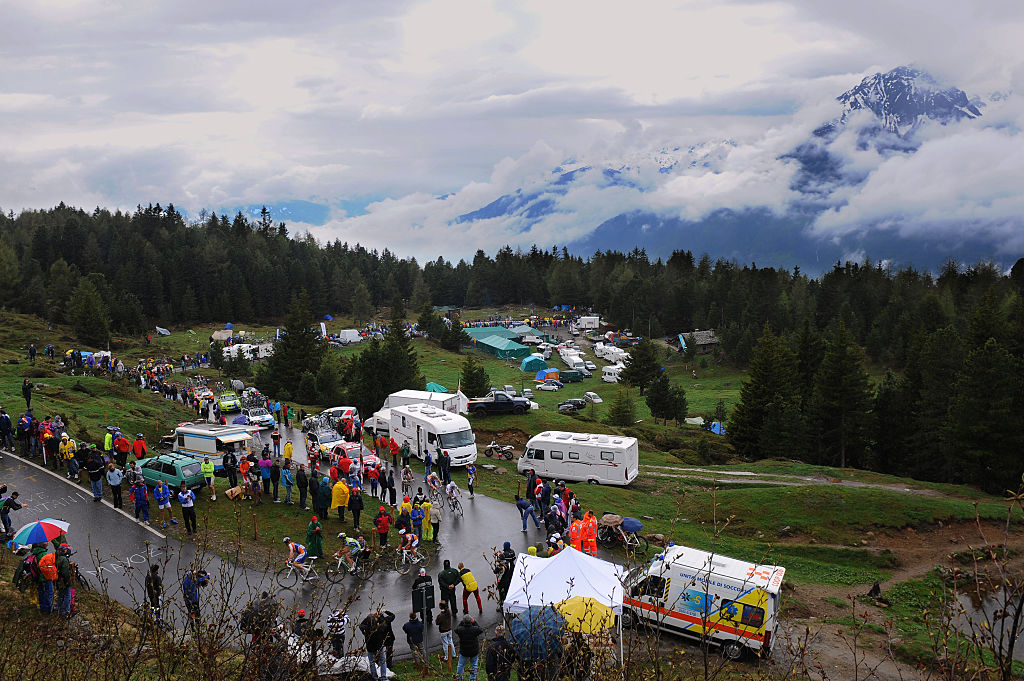
In 2015, the Mortirolo played host to Alberto Contador's critical race-winning comeback, then climbing from the famous Mazzo di Valtellina start.
Contador suffered a mechanical before the Mortirolo and swapped bikes, losing a minute. The Spanish Grand Tour specialist swept up the ascent, riding a 34 x 30 gear ratio to enable him to make relentless seated efforts, and overtook major general classification challenger Fabio Aru.
Aru found himself truly broken by the savage inclines and drifted back more than two minutes behind Contador.
The climb has also played its part in the Giro d'Italia Women, where its last inclusion in 2016 saw Mara Abbott attack on the climb to take stage victory as well as the race lead.
Its rumoured inclusion in the 2025 Giro d'Italia Women excited many across the sport. Though it failed to make the final route, the Giro's new elevated status in women's cycling assures us that there is certain to be a battle of the world's best riders on these slopes in years to come.
In 2025, the Mortirolo features in the men's Giro d'Italia on stage 17, sitting after the Passo del Tonale to deliver a savage climbing stage. However, the peloton will brief a sigh of relief as organisers have decided to ascend it from Mono - turning a leg-breaking 11.7% climb into a tactically significant but forgiving 7% ascent.
Intriguingly, despite its prominence in WorldTour racing, it is in fact an amateur cyclist who holds the ascent record on Strava. Canadian rider Jack Burke ascended the Mortirolo in a time of 43:45 – a full 67 seconds faster than Vincenzo Nibali.
"I smashed it… It's just one of those days when you really have the best legs, you see the power numbers and you're like – yeah, I'm on a good one today," Burke said after announcing his record ascent time.
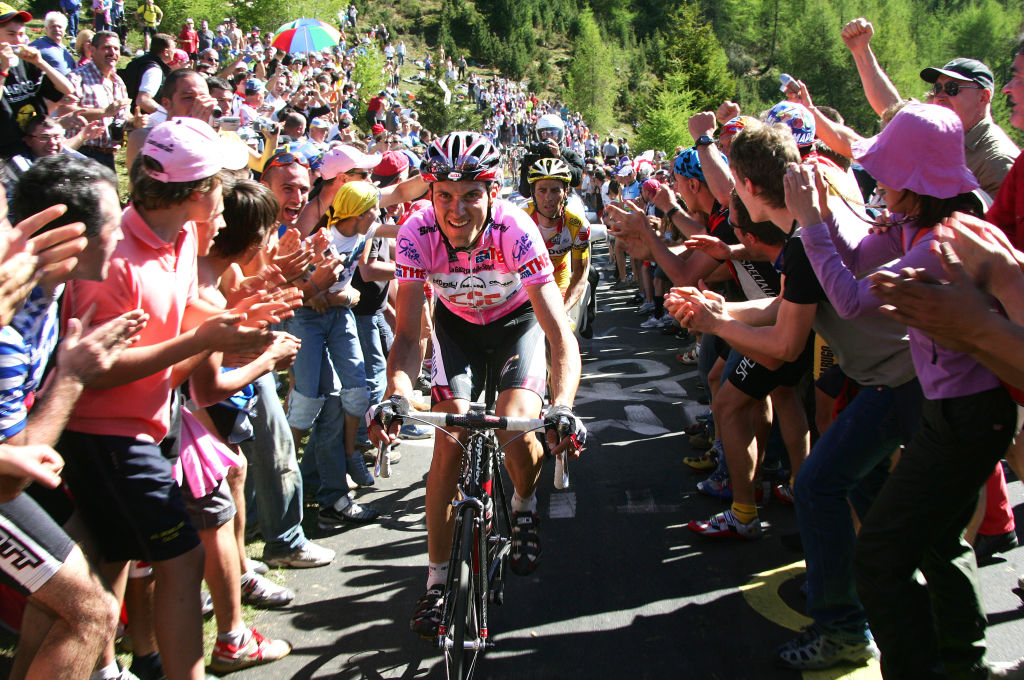
What is it like to climb for a non-pro?
I have climbed the Mortirolo twice in my life, both at a time when I was near the peak of my fitness. On both occasions, I crawled up on my lightest gear, desperately alternating between standing and sitting in search of some relief from the lactic bath that this ascent inflicts.
Many riders attack the first 15% incline of the Mortirolo, unaware that those gradients aren't a ramp to roll over, but a glimpse of the persistent gradient that the climb inflicts on a rider throughout.
The steepest 19% gradient comes after the San Matteo church, barely more than 4km into the climb. It's a cruel leg-breaker that leaves the 7km ahead as a war of attrition.
The trees open up as the road approaches its 1841m summit, and a brief relief of 6% precedes the final hairpin.
The descent is fast, steep, terrifying but stunning.
Across Europe, you would struggle to find a more challenging climb, and one where the understated heritage of pro cycling marks every metre of tarmac.
